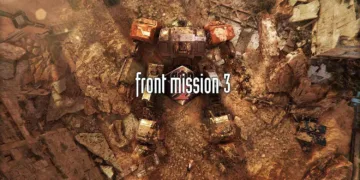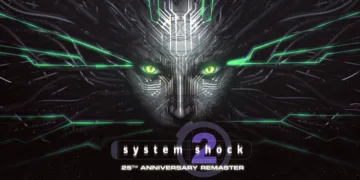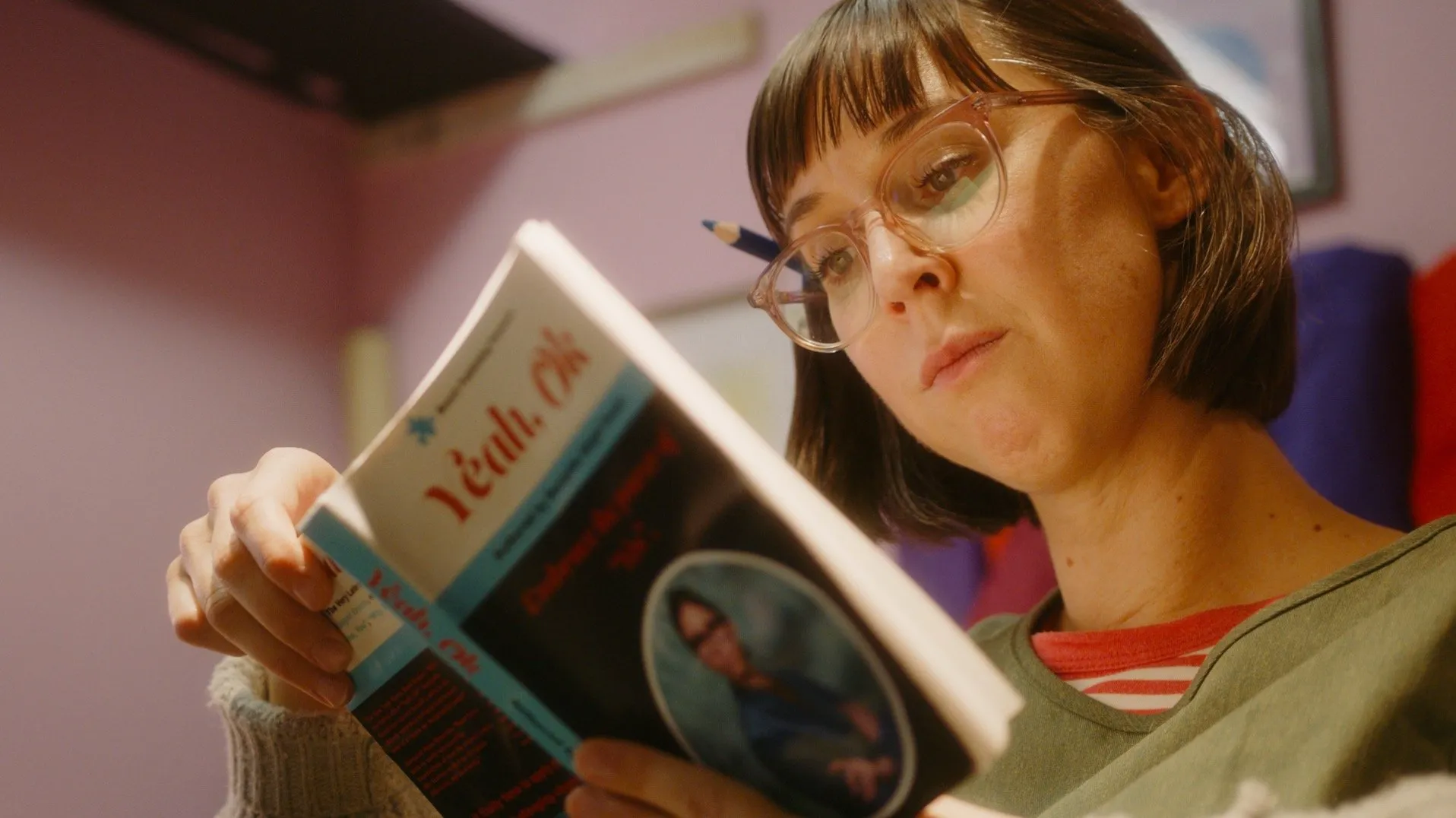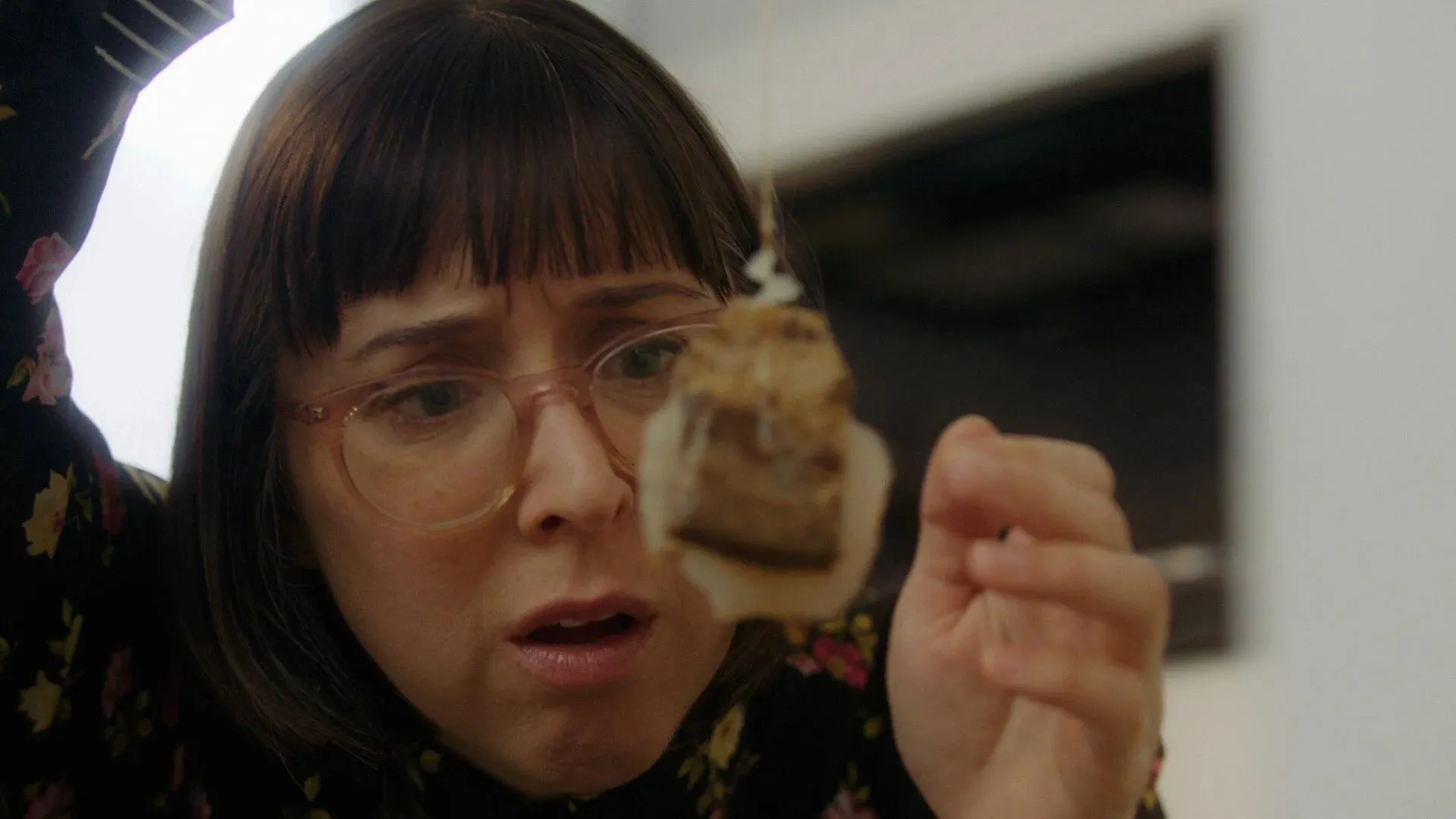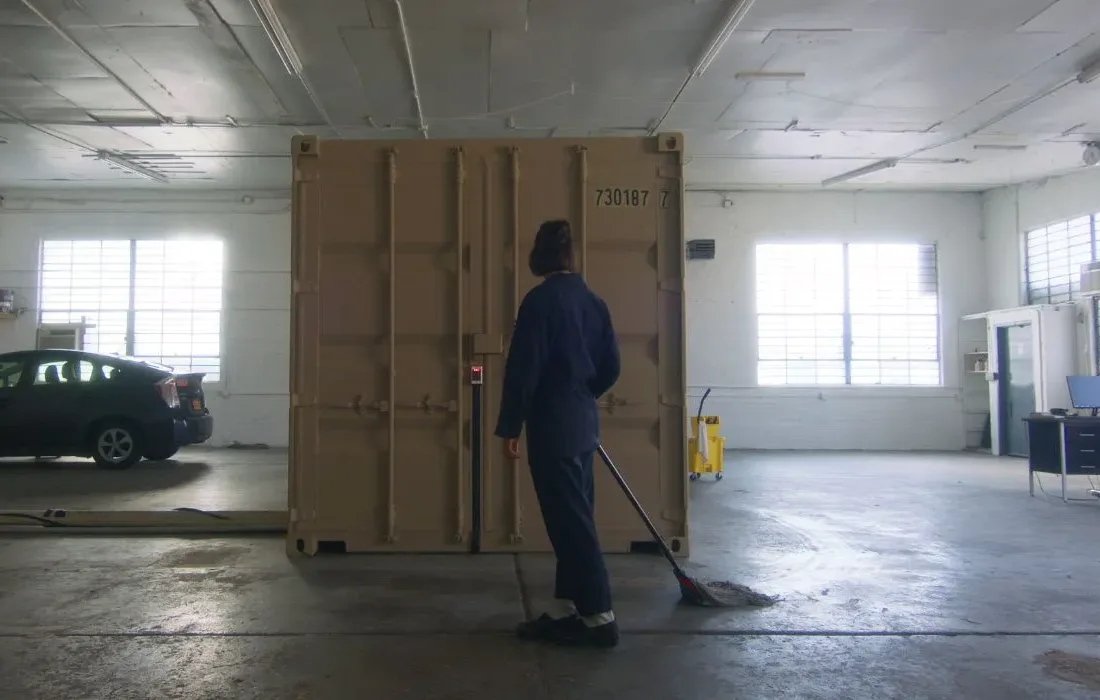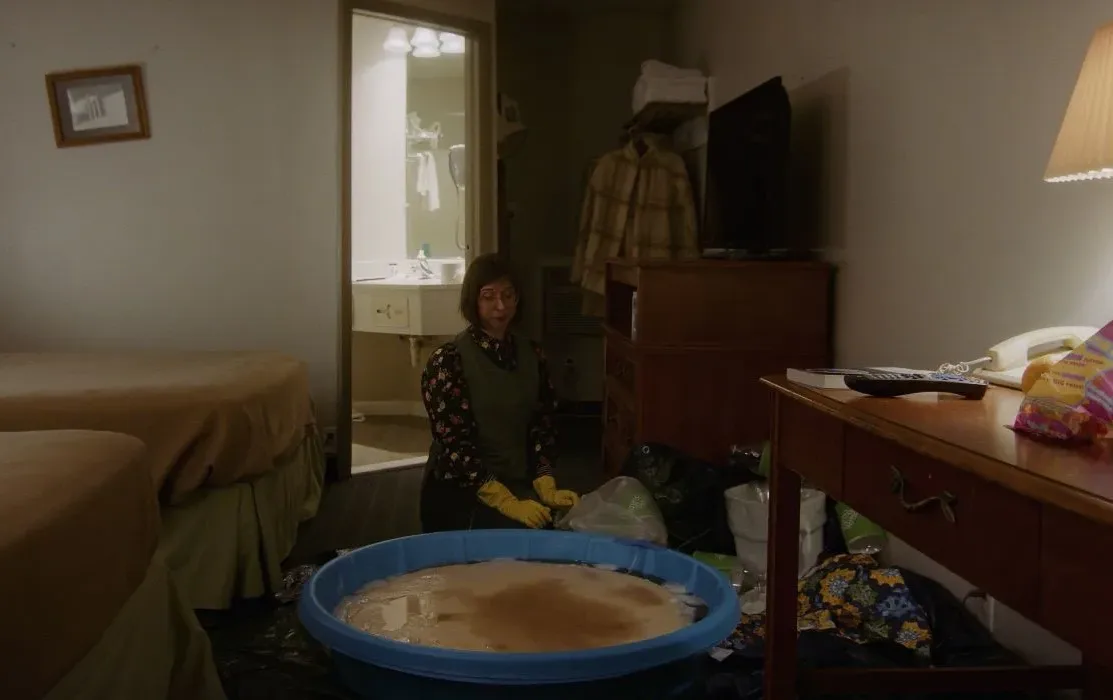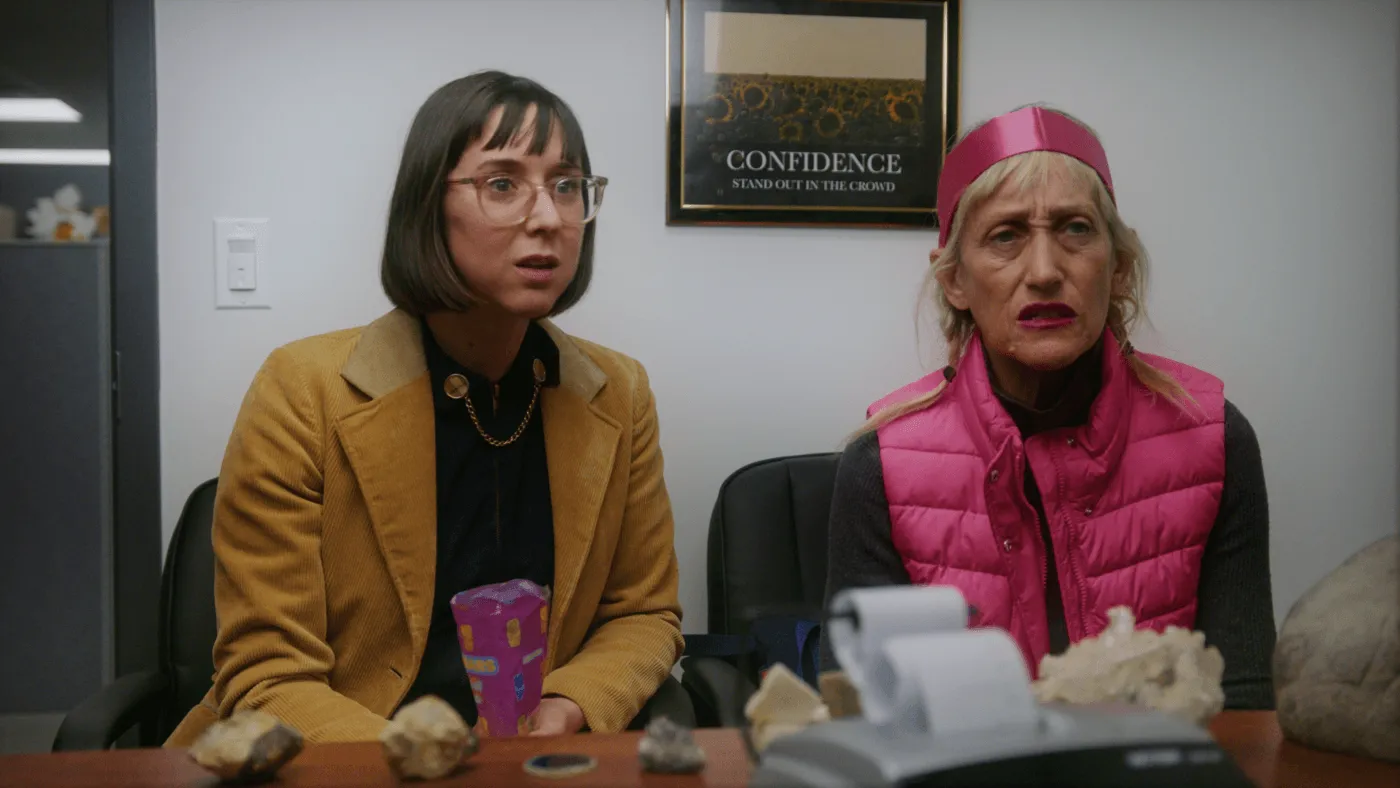At first sight, “Darla in Space” appears to have a premise that feels like a fever dream, an ambitious blend of the every day and the bizarre that intrigues and unsettles. Darla, portrayed by Alex E. Harris with a wonderful eccentricity, is a failing entrepreneur burdened with a massive tax bill that echoes the financial nightmares many of us fear. Her mother’s reckless behaviours have pushed her to the brink of bankruptcy, a reality that strongly resonates with our current anxieties about economic instability.
Enter Mother, a sentient kombucha scoby with the unique ability to induce orgasms—a concept so bizarre that it demands our attention. This contrast between Darla’s bleak financial reality and the fantasy promise of pleasure captures a fundamental absurdity.
It invites us to question the lengths we would go to escape our burdens. The idea of monetizing one’s pleasure strikes me as both ludicrous and oddly relatable in the middle of financial despair. It prompts reflection: how frequently do we commodify our most intimate experiences in the pursuit of survival?
The film’s premise alternates between surrealism and a scathing critique of the gig economy, reminding us that our desires, no matter how whimsical, are typically motivated by the most pressing necessities. But as I grapple with this absurdity, I can’t help but feel a tinge of unease. Is it an intelligent critique of our modern lives, or is it merely a comedic escapade that fails to delve deeper? I find myself both fascinated and challenged by this unique narrative as I reflect on my experiences handling financial pressures and the often ludicrous answers we devise.
The Kaleidoscope of Desperation: Exploring Character in “Darla in Space”
Darla, the character in “Darla in Space,” emerges as a protagonist and a mirror reflecting our vulnerabilities and desires. Alex E. Harris gives her a blend of naivete and tenacity, crafting a relatable figure caught in the fast-paced modern life.
Darla’s background—a quirky businesswoman in the niche market of kitty caskets—feels both absurd and all too familiar, evoking my own encounters with the bizarre lengths we sometimes take to carve out a niche in a crowded world. Her goals are clear: She’s not merely looking for financial support; she also wants validation and a sense of control in a life that appears to be constantly chaotic.
However, her desperation is where the film’s emotional depth lies. Darla’s entrepreneurial zeal is both a strength and a weakness, driving her to engage in the ludicrous idea of charging for orgasms. This venture feels as much like a survival tactic as it does a path to self-discovery. I find myself wondering: how many of us, if cornered, would consider such outlandish options? This interplay of desperation and ambition is central to her character growth, resulting in humour and poignant introspection.
Darla’s condition is exacerbated by supporting characters like Leona, her financially reckless mother, who serves as a humorous counterpoint. Constance Shulman’s portrayal of Leona is an absurd masterclass, embodying the chaotic forces that shape Darla’s reality. In moments of anger, I see echoes of my familial challenges—well-meaning but misguided relatives who unwittingly complicate our paths.
Then there’s Charity, the CPA, who adds layers to the narrative with her practical yet hilarious approach to Darla’s financial mess. Their interactions illustrate the frequently conflicting relationship between dreams and the hard reality of duty, reminding me of mentors and friends who guided and frustrated me on my journey.
As Darla navigates her increasingly bizarre world, the tumultuous interactions with her clients, each of whom reacts to Mother’s unique offerings in drastically different ways, heighten the film’s exploration of human desire and connection.
These experiences evoke a sense of shared experience in our pursuit of pleasure, validation, and understanding. In this kaleidoscope of characters, I find a reflection of my struggles and the absurdities of life, prompting me to wonder: what does it truly mean to pursue fulfilment in a world that frequently appears illogical?
Hustle and Heart: Themes of “Darla in Space”
“Darla in Space” expertly constructs a narrative that echoes the unrelenting pulse of the gig economy, a reality that all too well resonates in today’s insecure work landscape. Darla’s hurry to commercialize the bizarre offer of a sentient kombucha scoby echoes the lengths many of us go to in our daily lives, motivated by the threat of financial disaster.
I frequently reflect on mycarious jobs, those side hustles that promise independence but often trap us in a cycle of barely scraping by. The film masterfully captures this dichotomy—Darla’s entrepreneurial energy is both a source of empowerment and a sign of her desperation, set against the backdrop of a society that frequently associates worth with financial success.
However, underneath this bustle lies a deeper exploration of what it means to seek fulfilment and joy. Mother’s abilities go beyond simply physical pleasure, delving into a deep human desire for connection and joy. The characters’ reactions to Mother’s presents reveal layers of longing—each orgasm is a moment of escape, a little respite from the weight of reality. I can’t help but ponder: What does it mean to actually experience joy in a world when emotional and financial interactions often feel transactional?
This film encourages us to confront the complexities of satisfaction. It raises serious issues about our pursuit of happiness in a culture that monetizes intimacy. As I watch Darla navigate these depths, I am struck by the notion that our quest for fulfilment frequently leads us down unexpected pathways, revealing what we desire and who we are in the process.
The Delicate Dance of Absurdity: Humor and Tone in “Darla in Space”
the surreal. The film’s humour is a mosaic of odd character interactions and bizarre circumstances in which the commonplace and magical intersect entertainingly. Consider Darla’s ingenious plan to provide orgasms through Mother the Scoby, a proposal so ludicrous that it provokes laughter not only for its absurdity but also for the sheer audacity of the idea.
I frequently reflect on how humour can illuminate our anxieties, making the bizarre relatable. In this case, it’s as if the filmmakers took our common dissatisfaction with financial struggles and infused it with a playful absurdity that lightens the load, albeit only temporarily.
Amidst the comedy, the film masterfully mixes moments of emotional depth that give its absurdity a genuine foundation. There are moments when the humour gives way to profound revelations—for example, when Darla’s entrepreneurial energy flashes with vulnerability or her interactions with Mother indicate a deeper longing for connection. These shifts remind me of my own experiences, in which laughter is frequently interspersed with moments of reflection. The power of this tonal dance lies in its ability to engage the audience, pulling us into a world in which we can laugh at the absurd while also reflecting on our shared human experience.
As I read about Darla’s colourful adventures, I find myself split between laughing at the absurdity and pondering the heart truths hidden beneath the surface. This film begs the question of whether we can fully appreciate the absurd while grappling with our emotional realities. It indicates that we may, inviting us to find joy in the midst of chaos while accepting our vulnerabilities.
A Collaborative Canvas: The Directorial Vision of “Darla in Space”
Eric Laplante and Susie Moon’s artistic collaboration brings “Darla in Space” to life, crafting a narrative that feels whimsically anarchic and rigorously planned. Their collaboration reflects a profound understanding of one other’s strengths as if they are weaving a tapestry of stories that embraces the unexpected nature of their story.
This relationship is palpable, creating a dynamic that allows for a free-flowing exploration of ideas—one that invites the audience to revel in Darla’s idea’s delicious weirdness while simultaneously grounding it in genuine emotional moments.
As I reflect on their directorial style, I can’t help but feel a twinge of envy reminiscent of my joint projects in which creative impulses either clash or complement. Laplante and Moon age film to find an easy balance, allowing the film’s eccentric premise to evolve naturally. The film genuinely shines in this dance of ideas, providing a vision that is as much about life’s absurdities as the relationships that define us.
Their writing approach supports this vision with witty language and genuine character interactions, even amidst the surreal. Each line has a playful cadence, capturing the essence of modern communication—imagine social media banter mingled with sincere admissions. However, there are instances when I find myself questioning the pacing: Does the rapid-fire humour in certain moments outweigh the deeper narrative threads? It’s a tricky balancing act reflecting muggles with sustaining momentum while acknowledging quieter, more reflective moments.
Finally, the framework of “Darla in Space” embodies a sense of unpredictability, echoing the chaos of its characters’ lives. The film rushes with thrilling and tiring energy, prompting me to ponder if this fast speed serves the story or detracts from its emotional heart. As I navigate these questions, I’m reminded of the beauty and complexity of collaborative storytelling—where every decision the filmmakers make reverberates throughout the experience, inviting us to engage with the narrative and the act of creation itself.
Whimsy and Wonder: The Visual Language of “Darla in Space”
“Darla in Space”‘s visual presentation is a feast for the eyes, a whimsical tapestry that enhances the film’s eccentric narrative. With a playful palette that feels both vibrant and somewhat off, the cinematography captures the surreal beauty of Darla’s world. Every frame is infused with a sense of magic, transporting us to a reality in which the absurd and the familiar coexist.
I am charmed by the physical effects and set design, which convey a tactile quality that digital effects frequently lack. The SCOBY floating in its homemade habitat has a deliciously tactile quality. It is a visual embodiment of both inventiveness and resourcefulness that resonates with my own independent filmmaking experiences, where necessity frequently begets innovation.
However, I grapple with whether this aesthetic achieves its full potential. The film’s indie charm is palpable, but does it sometimes wander too close to the quaint? As I reflect on this, I realize I have prejudices; I enjoy the rawness of independent cinema, but I also seek a certain polish that can elevate the viewing experience. The overall look balances two cultures, creating a creative, comfortable, inviting space. In this delicious chaos, I find a reflection of life itself: messy, unpredictable, and beautifully compelling.
Twists and Turns: The Narrative Dance of “Darla in Space”
The narrative framework of “Darla in Space” unfolds like a whimsical rollercoaster, full of surprising twists and turns that keep the audience entertained and slightly perplexed. Key plot elements, like Darla’s initial discovery of Mother and the resulting absurdity of their relationship, serve as amusing markers on this tumultuous journey.
Each swerve feels like a playful poke, reminding us that life, like the film, rarely follows a straight path. I’m reminded of my storytelling experiences, where the most engaging narratives frequently originate from the unexpected, forcing both the artist and the audience to accept uncertainty.
The film creates a sense of urgency as Darla navigates her challenges, from her financial woes to handling her clients’ peculiarities. Nonetheless, I find myself struggling with the pacing. At moments, the relentless energy feels exciting, pulling me into the fray, while at other times, it teeters on the brink of chaos, leaving me gasping for air.
There’s a tight line between keeping the audience engaged and overpowering them, and I wonder if the film occasionally crosses it. While fitting in its absurdity, the climax makes me ponder whether it captures Darla’s growth. Does it resonate with the emotional weight the narrative has established, or does it serve as a whimsical capstone to an already dizzying experience? These questions remain a testament to the film’s capacity to elicit thought even amid the laughter.
The Review
Darla in Space
"Darla in Space" is a delightfully absurd adventure that blends whimsical humour with melancholy reflections on desperation and connection. Its inventive premise and vibrant visuals create an engaging, albeit chaotic, experience, but the outstanding performances, notably those of Alex E. Harris, anchor the narrative. However, the pacing occasionally falters, leaving the emotional depth unexplored. It's a creative indie film that embraces the bizarre and challenges viewers to find joy in life's chaos.
PROS
- Unique and imaginative premise that blends absurdity with humor.
- Strong performances, particularly from Alex E. Harris and Constance Shulman.
- Visually vibrant, with a whimsical aesthetic that enhances the story.
CONS
- Pacing issues that can lead to moments of confusion.
- Emotional depth occasionally feels underdeveloped.
- The chaotic narrative may not resonate with all viewers.

































